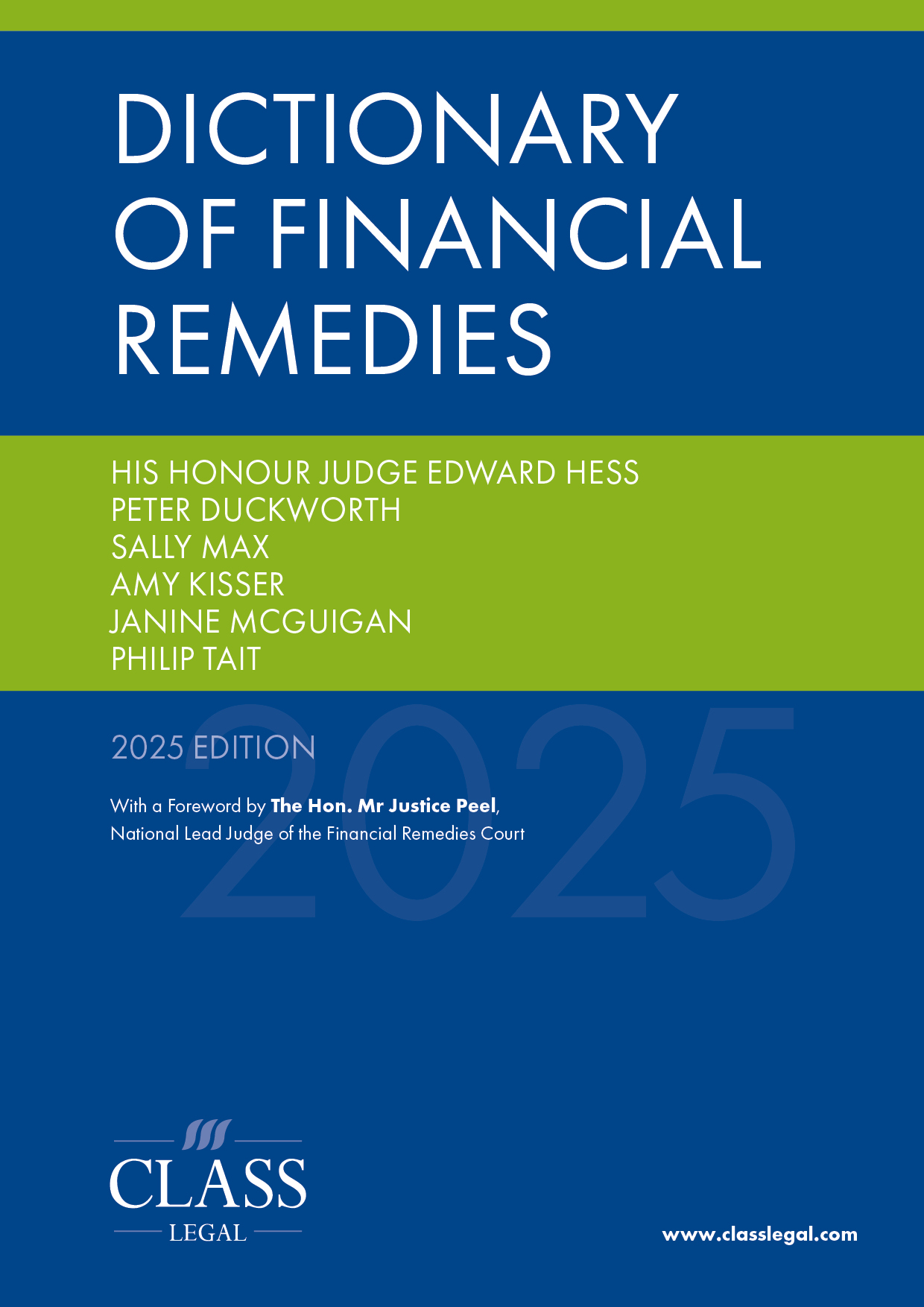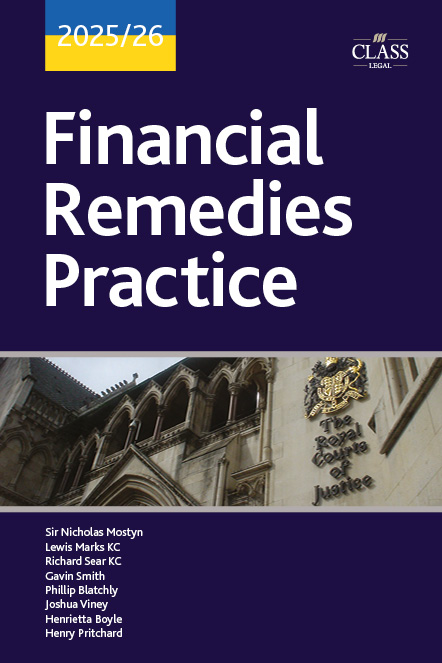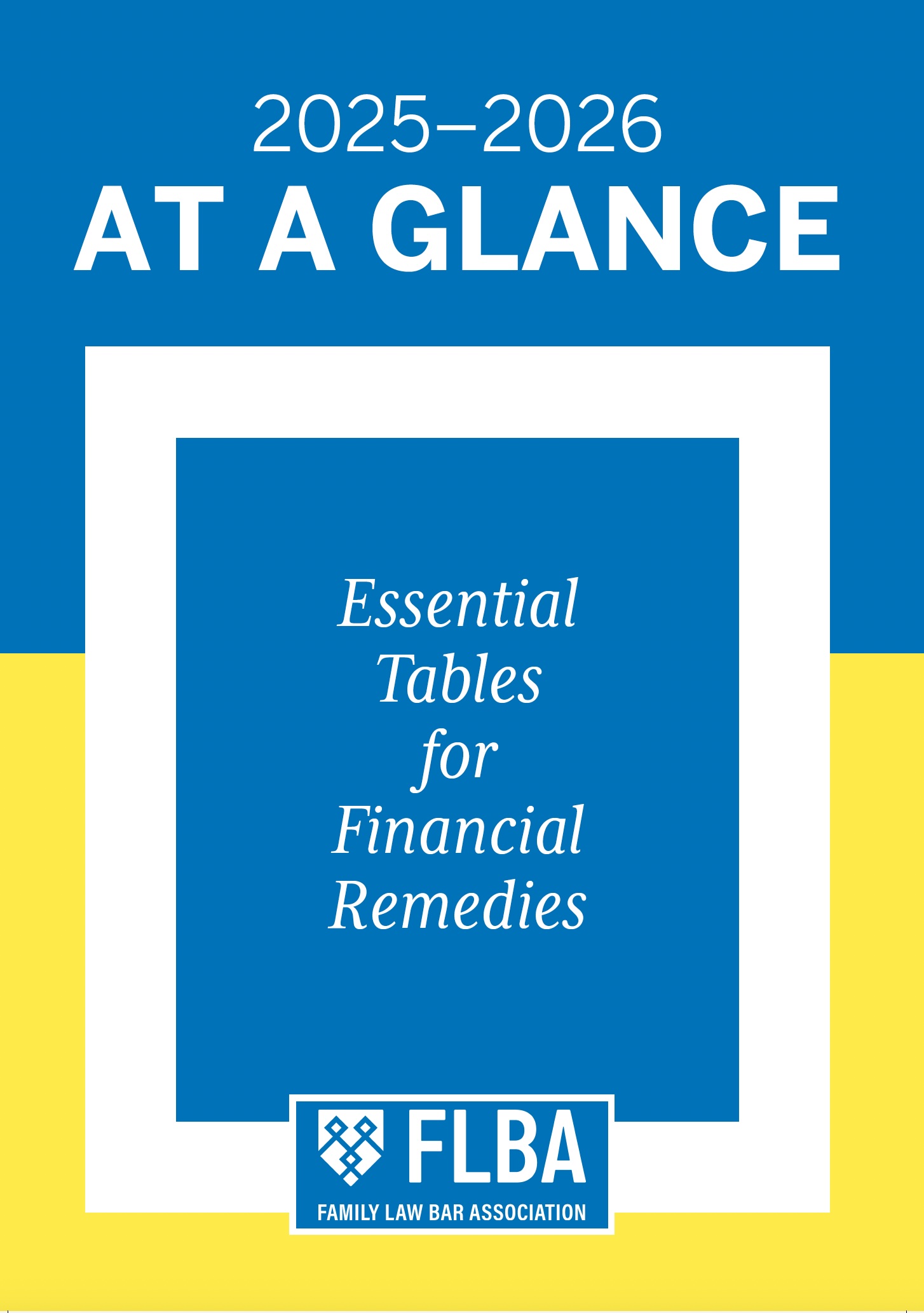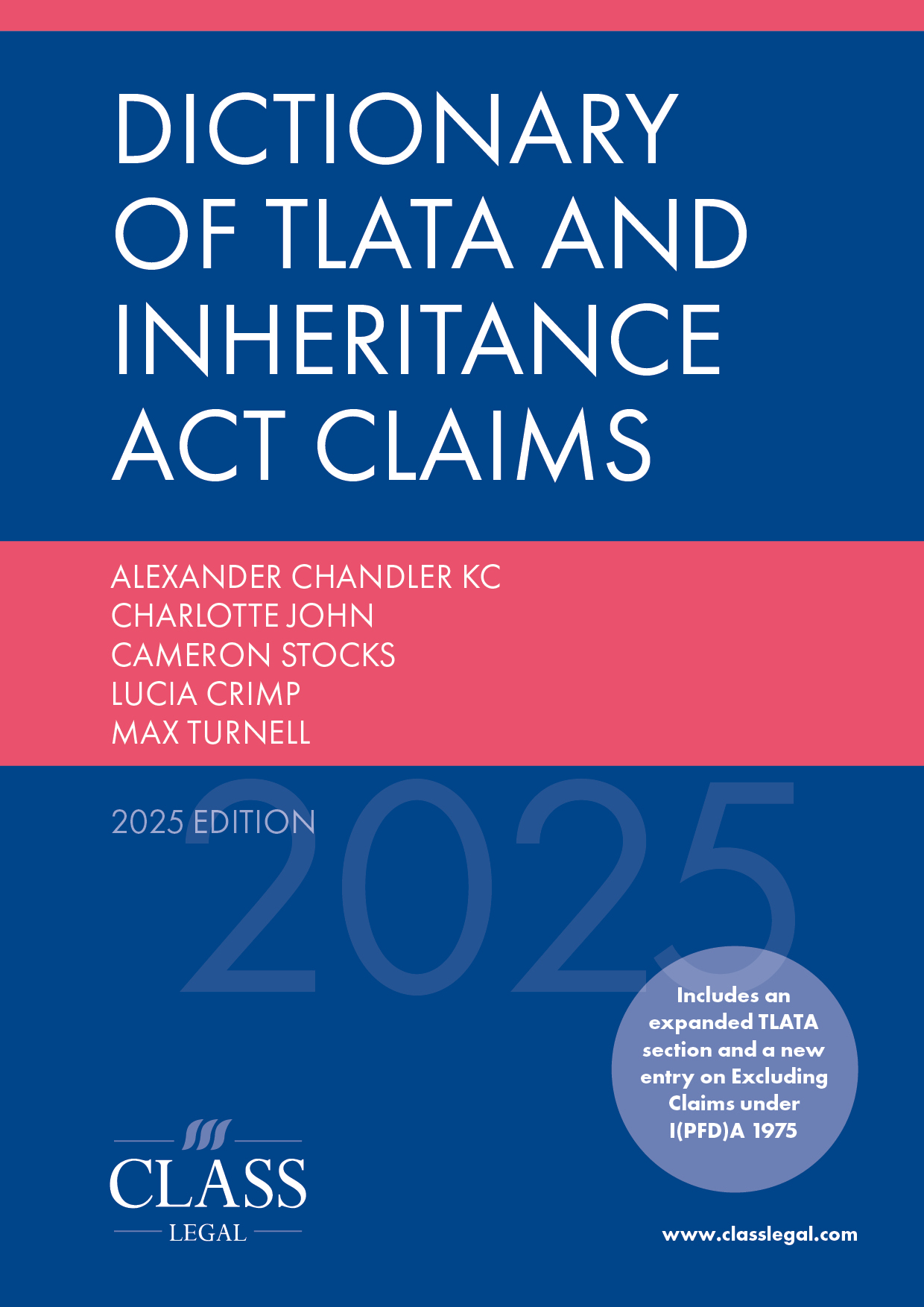
OS v DT and Post-Separation Income: Fairness Trumps Inflexibility
Published: 08/07/2025 07:00

In ‘Post-Separation Income: Has Rossi Survived Waggott and Standish?’ (5 February 2025), Nicholas Allen KC considered the potential impact of Waggott v Waggott [2018] 2 FLR 406 on the argument that income (or the assets or capital generated therefrom) earned in or referable to the first 12 months post-separation should be classed as matrimonial property to which the sharing principle applies – a principle first set out by Nicholas Mostyn QC (sitting as a deputy High Court judge) in Rossi v Rossi [2007] 1 FLR 790 and which he reaffirmed in E v L (Financial Remedies) [2022] 1 FLR 952. Consideration was also given to what was described as ‘the less rigid view’ taken in C v C (Post-Separation Accrual) [2019] 1 FLR 939 per Roberts J.
This issue has now been revisited in OS v DT [2025] EWFC 156 (B) per HHJ Hess (2 May 2025). The argument related to the income and bonuses and (as in C v C (Post-Separation Accrual)) the RSU awards received by the husband since the parties’ separation.
The parties met in 2006, began cohabiting in April 2009, married in May 2014, and separated on 30 September 2023. They had three children aged 10 years and younger. The husband had a successful career in the finance sector earning £1,285,745 gross in y/e 5 April 2024, but intended to take voluntary redundancy in the near future. The wife used to have a high income in the same field, but her career was interrupted by the birth of the three children and subsequent child-care responsibilities. She left the finance sector in 2017 and had not been in any commercial type work since 2021. She now worked part-time educating children with special educational needs earning c.£10,000 per annum, but hoped to earn in the region of £50,000 gross per annum in the future working as a teacher.
The final hearing began on 28 April 2025, some 18 months or so after separation. In the period between 1 October 2023 and 28 April 2025, the husband has continued to receive a large income, substantial cash bonuses and two RSU awards from his work (one in January 2024 and one in January 2025). He continued transferring his monthly basic salary (c.£14,000 per month) into the parties’ joint account to meet current family expenditure up to and including the October 2024 payment. Thereafter he paid nothing into the joint account, whilst the wife continued to pay her monthly salary payments into the joint account from which most household expenses were met. All the husband’s cash bonuses since separation (and indeed before) had been paid into a sole account.
The court had to decide (amongst other issues) how to treat (i) £141,350 received by the husband in monthly salary payments since June 2024; (ii) £97,521 ‘pre-paid’ bonuses received by him since June 2024; (iii) a £63,498 bonus awarded to him in January 2025 referable to work between January and December 2024; and (iv) £210,718 in unvested RSUs awarded to him in January 2025, again referable to work between January and December 2024.
On the wife’s behalf it was argued that the court should take a broad view and, in view of the fairly rapid progress from separation to final hearing, there should be no adjustments relying on E v L (Financial Remedies) per Mostyn J and his guidance at [73] that:
‘convention and tradition dictate that save in cases where there has been undue delay between the separation and the placing of the matter for trial before the court, the end date for the purposes of calculation of the acquest should be the date of trial.’
He then went on in the same paragraph to reconfirm the view he had expressed in Rossi as to when a post-separation bonus should be classed as non-matrimonial.
On the husband’s behalf it was said that the court should adopt the approach of Roberts J in C v C when she emphasised at [34]–[36] and [40] that, post Waggott, the proposition that the sharing of income ends at the date of separation such that identifiable monies received since the separation or assets or identifiable investments purchased with such monies should be excluded from the sharing exercise.
Of particular interest is HHJ Hess’s consideration of these two approaches. At [36] he stated that ‘[o]n closer analysis, these approaches are not necessarily inconsistent with each other’. He continued as follows:
‘The origins of the 12-month run-off on bonuses approach advocated by Mostyn J can be seen in scenarios where there are complications involved with identifying whether an amount of money received on a particular date was the result of endeavour prior to the separation or after it or perhaps a mix of the two. Bonuses received after the separation can sometimes be wholly or partly the product of endeavour prior to the separation. In such cases the court has to make a broad assessment on the facts of the case. In other cases the withdrawal of income from the meeting of joint family expenses, particularly if it involves a change in the status quo ante, might create unfairness for the other party.’
His Honour Judge Hess then applied these principles to the facts of the case and (at [37]) ‘exercising a broad discretion to achieve a fair outcome’ decided it would be unfair to exclude what had been saved from the husband’s monthly basic salary from the pool of assets to be shared because they were used prior to separation and in the first year post-separation from October 2023 to October 2024 to meet general family expenses. The decision by the husband:
‘[u]nilaterally changing the status quo in November 2024, just a few months prior to a final hearing when it was impractical to set up a reinstatement hearing without incurring disproportionate costs, should not in my view be regarded as sufficient to alter that.’
However HHJ Hess decided that different considerations applied to the cash bonuses received by the husband since June 2024 (£97,521), the cash bonus awarded in January 2025 (£63,498) which was attributable to work in 2024, and the RSUs (worth £210,718) awarded in January 2025 which was also attributable to work in 2024. Although all of these were either received within or were in (large) part referable to the first 12 months after separation on 30 September 2023, he considered all could properly be regarded as post-separation accrual only to be invaded on the basis of needs. He took a similar view in relation to a severance payment offered in the sum of £126,950 yet to be received. All were not susceptible to a sharing claim.
A second interpretation of Rossi v Rossi and E v L might be that in seeking to achieve a fair outcome Mostyn J was balancing the money earned by one party shortly after separation with the contributions (often domestic non-financial ones) made by the other party between separation and final hearing. In Rossi at [24.4] – which is the source of the 12 months post-separation starting point for classification as non-matrimonial – Mostyn J stated he entirely agreed with Coleridge J in N v N (Financial Provision: Sale of Company) [2001] 2 FLR 69 when he referred at p. 78 to:
‘the wife's continuing contribution too which similarly did not cease at the date of separation. She too has continued to play the valuable part that she had done throughout the marriage, in looking after the home and the children.’
As Mostyn J said:
‘during the period of separation the domestic party carries on making her non-financial contribution but cannot attribute a value thereto which justifies adjustment in her favour.’
This sub-paragraph was cited in GA v EL [2023] EWFC 206 per Stephen Trowell KC (sitting as a deputy High Court judge) at [61] (and [74](d)) where he stated:
‘24.4 is a point aimed at income rather than capital growth, but it does bear consideration in so far as it highlights entirely properly that one cannot overlook the non-financial contribution of the domestic party.’
The importance of post-separation domestic contributions was also emphasised in TF v SF [2025] EWHC 1659 (Fam) per Justin Warshaw KC (sitting as a deputy High Court judge) at [57] when he stated:
‘When I come to consider outcome in this case, I will bear in mind that at a time when W was trying to provide the children with a stable home, H undermined her from so doing by failing to provide her with fair and adequate interim provision. I remind myself that I am not here to punish either party nor do I take H’s behaviour in this regard to be conduct relevant to the section 25 exercise. But I consider that this is a factor to bear in mind when I consider each party’s post separation contributions.‘
This interpretation would be one consistent with A v M [2021] EWFC 89 where at [17] Mostyn J ‘briefly but emphatically’ dismissed the submission that the wife should be entitled to share in assets, earnings or profits generated by the husband after the date of final hearing (as opposed to generated after separation but prior to final hearing) by virtue of her contributions to the family in caring for the parties’ 12 year old daughter. This argument was said to be ‘completely untenable’ and ‘completely unprincipled’ as the concept of the sharing of the acquest was predicated on the parties being in an economic partnership and the decision of the judge at final hearing is to dissolve that partnership.
OS v DT does however provide a useful example of where the court’s sense of fairness – and which is of course the statutory objective – may lead to a demonstration of greater flexibility than some of the reported authorities may have suggested and how an affront to this sense – a unilateral change to the status quo just a few months prior to a final hearing and where the costs of an interim application seeking to restore the same would be disproportionate – may well mean that a party does not benefit from the same.
The judgment has been certified as citable in accordance with the Practice Direction on the Citation of Authorities and the recent guidance given by the President of the Family Division, but only in relation to another issue (relating to child maintenance) and not the treatment of post-separation income/bonuses.
Nicholas Allen KC
Michael Allum
25 June 2025










